Posts Tagged ‘veterinarians Edwardsville’
Why Your House-trained Dog Still Poops Inside and What to Do About It
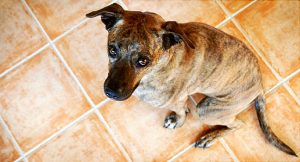 When your house-trained dog starts having accidents inside of the house, it can be very frustrating. You may be wondering why. Fortunately, this issue can be fairly easy to fix once you determine what is causing it.
When your house-trained dog starts having accidents inside of the house, it can be very frustrating. You may be wondering why. Fortunately, this issue can be fairly easy to fix once you determine what is causing it.
Your dog may suddenly start having accidents in the house if their normal outside environment is overstimulating or distracting. Dogs get distracted by new smells, pets, etc. which can cause them to forget that they need to go to the bathroom. To fix this, you should make a routine for your dog to go to the bathroom before they get to play. Avoid talking and interacting with your dog when he is sent outside. If you play with your dog, only do so after he has gone to the bathroom. Sticking to this schedule can eliminate the indoor accidents associated with overstimulation.
Other causes of indoor accidents can include fear and anxiety. If your dog is scared of something in the normal outdoor environment, your dog may not feel comfortable enough to go outdoors. To deal with fear related indoor accidents, you can take your dog outside when it is quiet (e.g. avoiding large trucks driving down the street). If you have recently rescued a fearful dog, it might be best to temporarily train them to use pads inside until they have adjusted to the new environment.
Similarly, changes in schedule can cause indoor accidents. These can include new pets and family members being around the house. Dogs are creatures of habits and changes in their lives can disrupt their schedule. Puppies tend to use the bathroom a few minutes after eating, drinking, playing, or napping while adult dogs tend to go early in the morning, mid-day, early evening, and right before bed. To deal with this issue, keep dogs on a very consistent schedule including feeding times and bathroom times. If you keep this schedule consistent, you will likely see an improvement right away.
A poor diet can also cause indoor accidents. Feeding cheap foods from your supermarket may yield more frequent and bulkier bowel movements. For this reason, a premium dog food is preferable since more nutrients are absorbed and hence less waste is produced. This means smaller stools and on a less-frequent basis. To reduce the amount of waste your dog produces and lessen the number of indoor accidents, feed your dog homemade food (recipes can be found online) or high-quality foods. As a rule of thumb, feed your dog natural or organic brands when possible.
When adopting puppies and if they are over eight and a half weeks old, they have a substrate preference. This means that they have a preference to the surface that they like to go to the bathroom on. If a puppy was trained to use pads instead of grass, it will be a difficult transition for them to start using grass immediately. The dogs may hold it until they find a surface that they like which could be your carpet.
Some possible medical causes to indoor accidents range from kidney issues to dietary problems. If your dog was reliably housetrained in the past and recently began having accidents, it is best to bring your dog to set up an appointment to accurately diagnose and treat your pet.
Simply enough, your dog might be old, or they might be inside for too long. You should not scold your well-trained dog for soiling in the house when they are inside for too long.
Lastly, dogs have a natural instinct to relieve themselves where they have done it before. Your dog can smell their own accident and acknowledge it as an acceptable bathroom area. Deep cleaning can relieve the issues associated with this.
If you ever have any questions, feel free to contact Dr. Olsen at Olsen Veterinary Clinic, available to be reached at 618-656-5868.
Dr. Olsen’s Breed Spotlight: The Lowchen
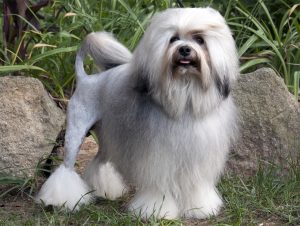 The month of February is reserved to spotlight a dog breed. Most of the time, I try to shed some light on a breed that isn’t very popular. Well this month is no exception as I am featuring a dog that is not very popular, unique in its appearance, rich in history and really considers its only job as being a companion for its owner. That breed is the Lowchen, which is also known as the “Little Lion Dog”.
The month of February is reserved to spotlight a dog breed. Most of the time, I try to shed some light on a breed that isn’t very popular. Well this month is no exception as I am featuring a dog that is not very popular, unique in its appearance, rich in history and really considers its only job as being a companion for its owner. That breed is the Lowchen, which is also known as the “Little Lion Dog”.
The Lowchen is a small breed that generally stands about a foot tall but has an enormous heart. The coat is traditionally kept in a “lion clip” in which most of the hind quarters and tail are clipped down close to the skin. The overall effect is that of a mini lion with a full mane and plumed tail. This breed coat comes in many colors and color combinations.
The breed has a long and somewhat controversial history. We know from works of art depicting images of small dogs in a very distinctive lion trim from the breed dated to the 16thcentury. The breed has been depicted throughout the centuries in paintings, drawings and tapestries from around the world.
The controversy arises as to the exact origin of the breed. There are several theories of debate with one thinking that the breed originated in Northern Europe which is now known as Germany, France and Belgium. Because it came from this area, the Lowchen is thought to be tied to the breeds that were the forerunner to the modern day poodle. The stories go that they were a favorite companion for the ladies of the castles and they would lay close to their owners at night to keep them warm like a water bottle, as well as attract the fleas away from the owner.
Another theory is that the Lowchen originated in the Mediterranean region and are directly related to the Bichon breeds. Also there are some theories that the breed might have originated in Russia or Tibet.
The Lowchen has been a resident of all households through the ages, from castles to farmyards and cottages. Aside from the function of being a companion, they possibly were varmint hunters and fierce little guards.
There is a story from the late 1700’s about a Lowchen whose name was Bijou. As the story goes, Bijou was so upset that his owner was leaving him behind, he jumped out of a castle window into the Lahn River that was 60 feet below. One ending has him surviving and was rewarded by riding to the hunt in the owner’s saddle, the other that the jump ended in disaster. Whichever the outcome, his portrait from 1787 still hangs in the Baronesses’ bedroom in Wellburg Castle.
Little has been written about this breeds early years. The first record of a breeder and fancier was Dr. Walthier in Germany in the 1800’s. The breed standard was written in the 1800’s and in 1897, a Madame Madelaine Bennert purchased her first Lowchen. She is the one who would be recognized for her efforts in saving the disappearing breed.
In 1999, the Lowchen was admitted into the AKC in the Non-Sporting group. The Lowchen is a small breed that weighs about 15 pounds and has a life expectancy or about 13-15 years. It is a very loving dog whose sole purpose is giving love and hoping to get loved in return. It might see a squirrel, chase it and catch it, but it would not know what to do with it if it did catch it. It will bark at strangers, but then when they enter, the Lowchen will lick them to death. The Lowchen’s favorite spot to be is on the couch watching out the window.
Don’t mistake the breeds sweetness, because it is a true lion that will stand up to any German Shepherd and bark down a Great Dane. They are active, smart, and love children. They can make very good agility dogs because they are trainable, resourceful and very adaptable. Since they like to bark, it is recommended that they undergo some obedience training. Due to their haircoat it is advisable that they be brushed regularly and see an experienced groomer monthly. Another plus with this breed is that they are hypoallergenic.
There are very few health problems with this breed. But they may suffer from patellar luxations, heart issues and some eye issues.
Here at the Olsen Veterinary Clinic, we love to see all breeds. So if you have a Lowchen, or a mixed breed, gives us a call at (618)-656-5868 and we will be happy to assist you.
What To Do When Your Pet Is A Handful – And You Are Leaving Town
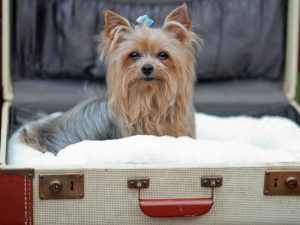 You are about to experience the trip of a lifetime, but there is only one problem. You have a pet that is very unruly and it is hard to leave it behind because all your friends and family scatter when asked to take care of it. Have you ever had that scenario? I am sure a few of the readers have. So what options are out there that will give you piece of mind that your pet will be taken care of?
You are about to experience the trip of a lifetime, but there is only one problem. You have a pet that is very unruly and it is hard to leave it behind because all your friends and family scatter when asked to take care of it. Have you ever had that scenario? I am sure a few of the readers have. So what options are out there that will give you piece of mind that your pet will be taken care of?
Family/Friend:
Consider taking your pet to a friend or family member that has pets, but make sure they are accustomed to each other. Friends that are also pet owners are very likely to be able to handle a pet that is a handful.
Pet Sitter:
Another solution may be to hire a pet sitter that will stay in your home 24/7. That way your pet will not need to leave your house and can retain their comfort and schedule in your own home. Professional pet sitters are typically well equipped to handle pets that are rambunctious.
Dog Kennels:
A not so new trend is the dog kennels. Marketing has kindly changed their names to pet hotels. Your pet may actually enjoy it. A lot of them offer daycare also, so you may consider taking them for daycare or a weekend prior to you leaving. If they enjoy it, then you may feel better about leaving them there. Some also have pet cams so that you may be able to check in on them anytime day or night. Make sure you bring your pet in before going, as most establishments require your pet be up to date on vaccinations.
Lastly, a refresher obedience class can be a good idea. Positive-reinforcement or private classes make work best.
With the upcoming holiday season, our readers may happen to have this situation. The Olsen Veterinary Clinic can offer advice to our clients and give them some options that are out there. Please call the office at (618)-656-5868 for questions or comments.
Dr. Olsen’s Breed Spotlight: Pixie-Bob Cat
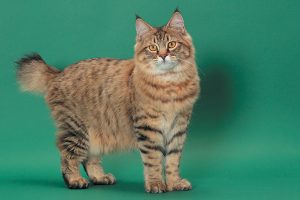 Dogs are considered “man’s best friend.” But what do you get when you don’t have room or time for a dog? How about a cat that thinks it’s a dog? The breed of cat that I am spotlighting this month has been described as that. It is called the Pixie-Bob.
Dogs are considered “man’s best friend.” But what do you get when you don’t have room or time for a dog? How about a cat that thinks it’s a dog? The breed of cat that I am spotlighting this month has been described as that. It is called the Pixie-Bob.
The Pixie-Bob breed is thought to be the result of the natural mating between a bobcat and a domestic shorthair, but they may also have sprung from a natural genetic mutation that gave them their wild look and bobbed tail. It is one of those mysteries that no one will ever know for sure. This breed was first developed in the Pacific Northwest in the mid 1980’s by a woman that acquired a male kitten with distinctive characteristics like a spotted coat, a short tail and more than usual numbers of toes. A year later, she acquired another male cat with a short tail and with the help of a neighbor’s female cat, produced a litter of kittens. One, a female, had a muted spotted pattern and the woman kept her—naming her Pixie. The breeder wanted more cats like Pixie, and soon the breed was born. They were recognized as an actual breed by the American Cat Fanciers Association in 2005.
Pixie-Bobs are described as “big, lively and outgoing.” The breeds’ devotion to its family belies its somewhat wild look. They tend to be a large cat where the male and female can weigh up to 12 and 25 pounds respectively. They are brawny and muscular which is why some breeders believe that the Coastal Red Bobcat had to be the founding father. Their ears tend to be tufted and resemble that of a bobcat by having lynx tips on the ears. Pixie-Bobs have a thick wooly coat like a bobcat and can be either long or short haired. They normally have a striped coat pattern and come in a variety of colors, but most are tawny, light gray, or reddish. Their eye color can be from golden brown to gooseberry green. A Pixie-Bob’s tail is a minimum of 2 inches by can be as long as to their hock. Their facial hair grows downward giving them the appearance of a man’s muttonchop sideburns. One other unique feature that some Pixie-Bobs have are that some are polydactyl. This means that they have more than the usual number of digits on its paws. Polydactyl cats are considered lucky, so if you own a Pixie-Bob, luck may be on your side.
Pixie-Bobs are inquisitive and like to interact with families, so they are true companions and members of the family because of their relaxed attitude. They communicate with their families with a pleasant voice and standard meows and purrs. They are active and enjoy being friends. They enjoy interaction with families and have been described by some as “the cat that thinks it is a dog.” Pixie-Bobs love going on car rides and walks just like dogs. They also get along well with dogs and other pets. Because they tend to be a medium to long haired breed, they do require a weekly brushing to prevent mattes from forming and regular nail trims.
If you have a Pixie-Bob cat or even a good ol’ domestic shorthair, the Olsen Veterinary Clinic tries to meet the expectations for all of your pet’s needs. If you have any questions or issues please do not hesitate to call us at (618)-656-5868.
Dog Park Safety Tips
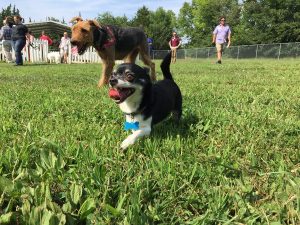 With the pet business becoming a multi-billion dollar business in recent years, it is telling us that more and more people have pets and are taking care of them. Among the fads, if you want to call it that, are “doggy daycares”, mobile groomers and dog parks. A lot of these services are great ideas as far as convenience is concerned, but how safe are they to our pets? Especially the dog parks.
With the pet business becoming a multi-billion dollar business in recent years, it is telling us that more and more people have pets and are taking care of them. Among the fads, if you want to call it that, are “doggy daycares”, mobile groomers and dog parks. A lot of these services are great ideas as far as convenience is concerned, but how safe are they to our pets? Especially the dog parks.
No, I am not going around and saying that dog parks are bad for you dog, but there could be some hidden dangers that may be lurking for the unprotected dog. Most dog parks are public places, so there is a good possibility that not all dogs are properly vaccinated against diseases such as Parvovirus, Roundworms, or even Kennel Cough. These diseases can occur during direct contact with another dog, or even if your pet has licked an area that harbored the diseases or parasites. So my advice is to make sure that your pet is currently vaccinated for all diseases. If they’re not—do not take them there. It is not worth it to possibly expose your pets to those diseases if you can help it.
We all see the dogs being playful in the park, but how do we know that the other pets can’t become overly aggressive? Because of this, I would recommend that your pet be kept on its leash. I know that is not the reason for dog parks, but that way you can control your pet if they or another pet exhibits some aggression so that you may prevent injury and not be faced with a costly veterinary visit.
If you allow your pets to run free in the park, injuries such as torn cruciates and other lamenesses can occur. To reduce this possibility, it might help to train your pets for the rigors that a dog park presents.
Dog parks are popping up in a lot of the communities. Realize that just because they are in a fenced in environment, they are not always completely safe. If you have any questions or issues, please feel free to contact us or give us a call at 618-656-5868.
How To Help Your Pet That Has Arthritis
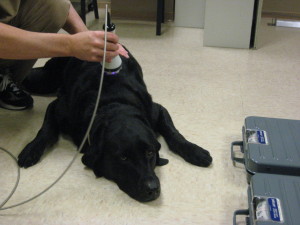 Everything gets older, including our pets. Sometimes this can lead to arthritic pain in their joints. Depending on the breed and size, arthritic changes can occur at an early age or later in life. No matter when symptoms start occurring, we as owners want to limit the pain and slow down the progression of the arthritic changes so that our pets can have a long, relatively pain-free life.
Everything gets older, including our pets. Sometimes this can lead to arthritic pain in their joints. Depending on the breed and size, arthritic changes can occur at an early age or later in life. No matter when symptoms start occurring, we as owners want to limit the pain and slow down the progression of the arthritic changes so that our pets can have a long, relatively pain-free life.
The joints maintain their ability to function because of the joint fluid that is produced by the cartilage that lines the joints. If the cartilage is damaged, it heals and repairs itself, but it is replaced by bone. And bone does not secrete joint fluid. So as the bone is replacing the joint cartilage, there is less joint fluid. With less joint fluid, there is more pain.
So when we get to the point where there is arthritic changes, what can we do to ease the pain and maintain relatively pain free function? There are many options for us to explore that will aid in slowing the progression of the arthritic changes which might range from supplements to surgical replacements or procedures.
Sometimes a supplement like glucosamine can help by reducing the inflammation of the cartilage of the joint. This product is relatively inexpensive and is available at pet stores along with being supplemented in the pet’s food. A product that I use called Adequan also assists the joints by slowing the breakdown of the joint fluid to provide better viscosity and lubrication. Here at Olsen Veterinary Clinic, I routinely will use a therapeutic laser to aid in the reduction of inflammation and pain in the joints. I have found that it can benefit the pet.
A lot of times, we will prescribe a nonsteroidal anti-inflammatory like Deramax or Previcox that will reduce the inflammation in the joints and ease the pain that the arthritic disease causes. There are numerous NSAID’s out there that we use with some being once or twice daily dosing.
Recently, medical and surgical procedures have been developed that can assist your pet with arthritis. These may include Stem Cell Therapy, joint replacement, or other procedures that will alter the joint itself for better pain free articulation.
Arthritis in pets is very common and we have many options at our disposal that won’t break the bank for the owners. Please give us a call at 618-656-5868 or contact us here for some options that may be available for you and your pet.
How To Remove Tree Sap From Your Dog’s Fur
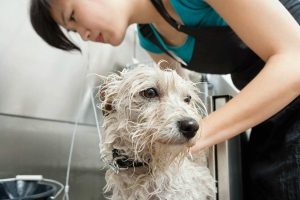 Dogs seem to get into ugly predicaments during the summer. If they like to wander, sometimes they may come back with that sticky tree sap that can cause debris like rocks or pine needles to stick to their paws. This can sometimes be quite painful and it leads to an owner figuring out how to remove the sap from your pet. Some types of sap can be toxic if ingested or cause irritation if it comes in contact with your pet’s skin, so it is important to work quickly to remove it.
Dogs seem to get into ugly predicaments during the summer. If they like to wander, sometimes they may come back with that sticky tree sap that can cause debris like rocks or pine needles to stick to their paws. This can sometimes be quite painful and it leads to an owner figuring out how to remove the sap from your pet. Some types of sap can be toxic if ingested or cause irritation if it comes in contact with your pet’s skin, so it is important to work quickly to remove it.
Fortunately, removing tree sap is an easy process and can be done using common household items. Below are some steps that I recommend to remove sap from the fur.
- If the sap is hardened, it will need to be softened using a hair dryer set on its lowest setting. Test the dryer first with your hand to find a safe distance where the air feels warm but not hot.
- Loosen the sap by using olive oil, mineral oil, or smooth peanut butter. Massage the product onto the affected fur and let it sit a few minutes. It is important to only use products that are safe if ingested, since your pet may try to lick the oily substance off its fur.
- Use your fingers and a wide-tooth comb to carefully and slowly work the sap out of your pet’s fur. As you go, you can wipe some of the oily product and residue with a washcloth or paper towel.
- If there are stubborn patches near the tips of the hair, you can carefully trim them with a scissors, making sure to avoid cutting too close to the skin.
- Do a final cleanse with a pet friendly shampoo and warm water. You may need to shampoo the area more than once to get all of the oily product out.
To remove sap from the feet, massage the area with the products listed above and them bathe them in a pet shampoo. The stubborn areas of fur around the paws may need the assistance of a groomer if you do not feel comfortable with that area.
As stated before, work quickly because that sap can cause some local irritation and digestive issues. If they experience symptoms like nausea, vomiting, weakness or irritation, seek your veterinarian as soon as possible.
How To Get The Skunk Smell Out of Your Pet’s Fur
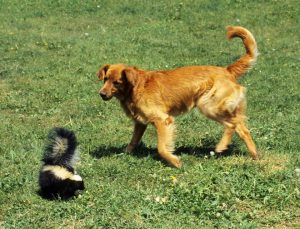 Ooh, that skunk smell. We all know that odor when our beloved dog comes back in and has had the unfortunate pleasure of meeting the neighborhood “Pepe Le Pew.” No matter what, the odor is very unpleasant and tends to linger wherever your pet lies. The skunk oil from the spraying can linger for up to a year if it is not removed from your dogs’ skin and coat. So it is essential that you effectively clean and bathe your pet.
Ooh, that skunk smell. We all know that odor when our beloved dog comes back in and has had the unfortunate pleasure of meeting the neighborhood “Pepe Le Pew.” No matter what, the odor is very unpleasant and tends to linger wherever your pet lies. The skunk oil from the spraying can linger for up to a year if it is not removed from your dogs’ skin and coat. So it is essential that you effectively clean and bathe your pet.
I have found that the first thing you do not want to do is to bring you pet inside. As stated before, the scent can linger for up to a year and anything that your pet has touched can harbor the odor. So leave it outside. Skunk spray is very irritating to your dogs eyes. So if you notice their eyes watering or red, then rinse them with water or gentle eyewash solutions. Any solution but Visine is fine. Once you have addressed the face, it now time to tackle the smell on his body.
There are several methods that can be used for de-skunking a dog, however most methods will need to be repeated more than once. The best formula that I have found is as follows:
- ¼ cup of baking soda
- 1-2 teaspoons of mild dishwashing detergent such as Ivory Snow
- 1 quart of 3% Hydrogen Peroxide solution
- Mix in bucket and use immediately
- Work the foaming mixture well into the coat
- Leave on for five minutes
- Rinse with warm water
- Follow with dog shampoo if desired
The quicker you can get to it, the better the results since the oil hasn’t saturated into the hair yet. It may be necessary to repeat the procedure several times.
It is important to be careful around the eyes as hydrogen peroxide can burn and irritate the eyes. The hydrogen peroxide may also bleach your pets’ coat blond so be careful with black coated dogs. Also discard the solution after use and never store it in a closed container as it will explode.
While no method is foolproof, there are many ways to help your dog avoid getting sprayed by a skunk again. Since skunks are nocturnal animals, consider leaving a light on in the yard or accompany your dog outside when you take it out in the evening. You may also set up some solar lights so that your yard is well lit throughout the night. Automated sprinklers set to turn on throughout the night may also be a good way to deter skunks from roaming in your yard. Always remember to cover your trash cans and take your dogs indoors for treats at night so that skunks aren’t lured in by a possible free meal. If you believe that you have a serious skunk problem you may want to call a critter control specialist to assist in removing the unwanted pest.
If you have any questions or other solutions about pests like skunks, we would like to hear from you. Please call us at (618)-656-5868 or contact us here.
Why Cats Spray And Mark In The House
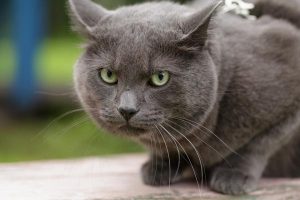 Ooh, that smell! That is the reaction when someone gets wind of where a cat might have sprayed or inappropriately urinated. These episodes are really very common in cats and can infuriate the cat owners enough to lead to rehoming of their cats. Before you go down that path, let’s educate ourselves about why cats spray so that we can deal with the problem – or even better, prevent possible cat urinary problems.
Ooh, that smell! That is the reaction when someone gets wind of where a cat might have sprayed or inappropriately urinated. These episodes are really very common in cats and can infuriate the cat owners enough to lead to rehoming of their cats. Before you go down that path, let’s educate ourselves about why cats spray so that we can deal with the problem – or even better, prevent possible cat urinary problems.
First we need to determine if it is behavioral or medical. Medical issues can cause inappropriate urination or marking and it is best to have them examined by a veterinarian to diagnose the problem. This would include Urinary Tract Infections, bladder stones and crystals, or possibly “idiopathic cystitis”. A medical diagnosis can be made by examining your cat, checking the cats’ bloodwork and doing a urinalysis on it. If there is something medical going on, antibiotics and maybe a diet change will be indicated.
Based on my experience, behavioral issues tend to be more difficult to treat. First we need to determine what factors are causing your cat to behave this way. Causes can include:
- Undesirable Litter Box: Cats are particular about their toilets. The litter box may be simply too dirty, or it may be clean, but it may be too small. In multi-cat households, there may not be enough of them. The rule is to take the number of cats you have and add one litter box. The location of the litter box may be an issue. Finally, it might be the scent of the litter. Experts recommend that unscented, scoopable litter be used.
- Stress in the Home Environment: Scent is the primary way that cats communicate. They have scent glands on their cheeks, paws and flanks so when they rub objects, they are putting their scent on that object. This is sending the message that they’ve been there and are staking their claim to tell the other cats to back off. In multi-cat households, this rubbing helps to establish territories and create bonds between the pets. The cats may feel that it is too dangerous to access the litter box. They may also act out if there is a new human in the home. Cats are very sensitive to the smallest changes in the environment.
- Old Urine Smells: If your cat has urinated on an area and you clean it up, the smell might remain. A cat’s sense of smell is much better than yours. If old urine odors remain in your home, there is a very good chance that your cat is returning to the area because of the smell. She will continue to urinate in the area that smells like urine. Because of this, it is essential to thoroughly clean any areas where the cat has urinated using a special cleaner.
In general, the key to stopping inappropriate urination in cats or avoiding it all together is as simple as being a responsible and attentive cat owner. Keep your cat healthy by visiting your veterinarian with routine health checkups. When issues arise, have the issue diagnosed and treated effectively and immediately. Make sure that the litter box is as attractive to your cat as possible, and clean up urine accidents thoroughly. Minimize stress in your cat’s environment. If you have any questions, please don’t hesitate to contact us call us here at the Olsen Veterinary Clinic at (618)-656-5868. Do all this, and your cat will thank you.
Can You Spay Or Neuter an Older Pet?
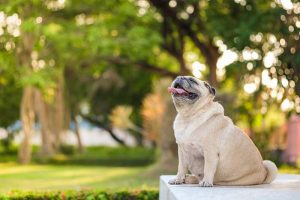 With the new year, it is always time to make resolutions. One of these may be to help control the pet overpopulation by having your pet spayed or neutered to prevent any unwanted pregnancies. If a client asks me what my opinion is, I would definitely recommend to spay or neuter your pet – even if the pet is older and reaching geriatric years in age.
With the new year, it is always time to make resolutions. One of these may be to help control the pet overpopulation by having your pet spayed or neutered to prevent any unwanted pregnancies. If a client asks me what my opinion is, I would definitely recommend to spay or neuter your pet – even if the pet is older and reaching geriatric years in age.
By neutering your male pet, you will be able to curb its behavior that has been influenced by the male hormones such as testosterone. Neutering may help lessen aggressiveness that is stimulated by the presence of female hormones. It will also help reduce and prevent prostate and testicular cancer that can be seen in older male pets that have not been neutered. Neutering may also help prevent spraying in male tomcats. I want to dispel any myth that neutering will make your pet lazy or cause obesity.
When we spay female pets, we are performing what we call an ovariohysterectomy. This is the removal of the uterus and the ovaries. Females can carry even more serious risks if they are un-spayed, which is why you would want to spay even if they are older. Un-spayed females can develop a condition called a pyometra tha is essentially an infection of the uterus that continues to manifest itself. If left untreated, your pet will probably die as a result of the uterus rupturing and causing an abdominal infection, so these are treated as an emergency. Spaying is indicated at this time, however the surgery is a lot more complicated and complications can arise due to the toxicity that the infection is causing. Spaying will also help reduce the risk and incidence of mammary cancer in pets. This is based on the lack of female hormones that were produced from the ovaries that were removed during the surgery.
Because of the hormones, female dogs and cats have their estrus cycles about every 6 to 8 months. During that time, their female organs can swell and create a discharge. These scents that are given off can attract males. So not only are you risking pregnancies but also complications that can follow.
Pet owners tend to worry that their older pet may not handle the anesthesia or surgery well, but pre-surgical bloodwork can help reduce or alleviate the issue with the anesthesia and make it as safe as possible.
Any time a patient undergoes a surgery, there is a risk, albeit a slight risk. The benefits from spaying or neutering clearly outweigh not doing so. If you have any questions, please feel free to contact us here at the Olsen Veterinary Clinic and we would be happy to answer any questions or dispel any myths that you may have heard.
